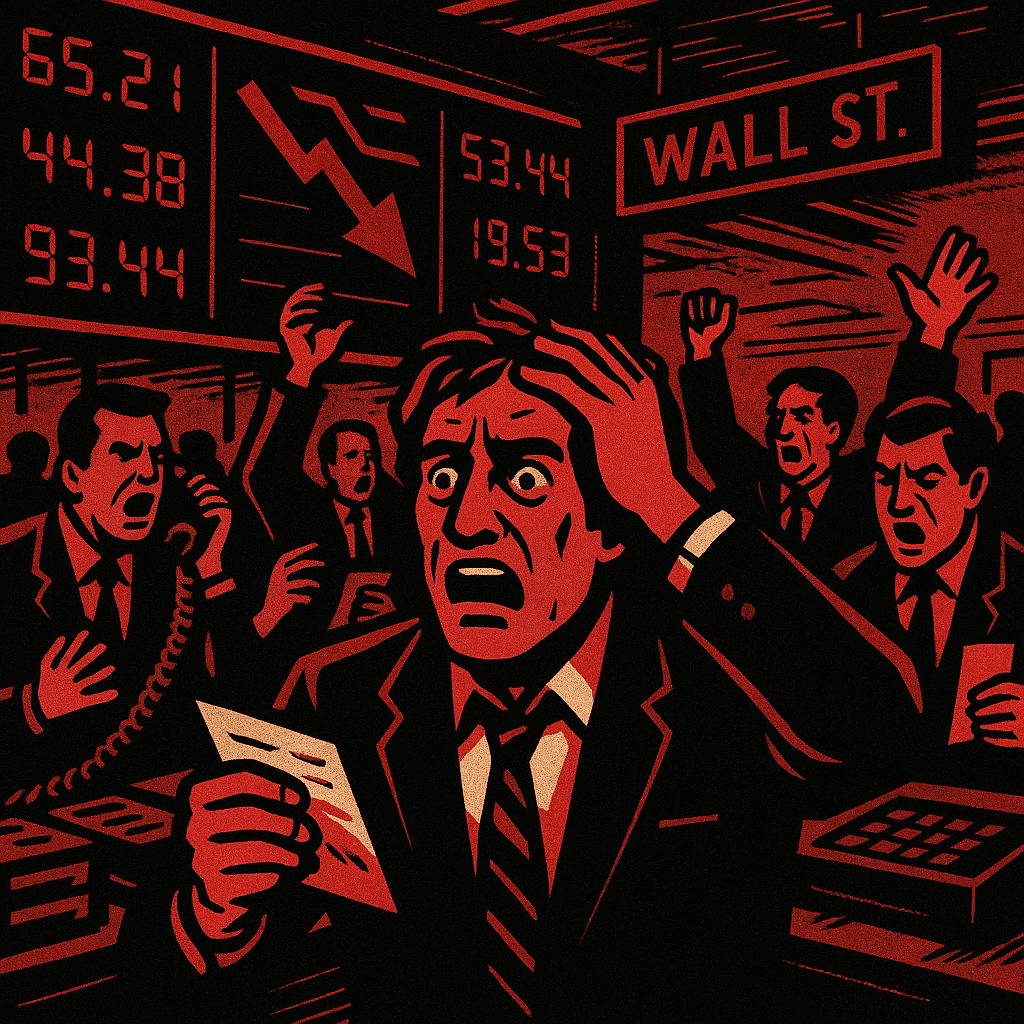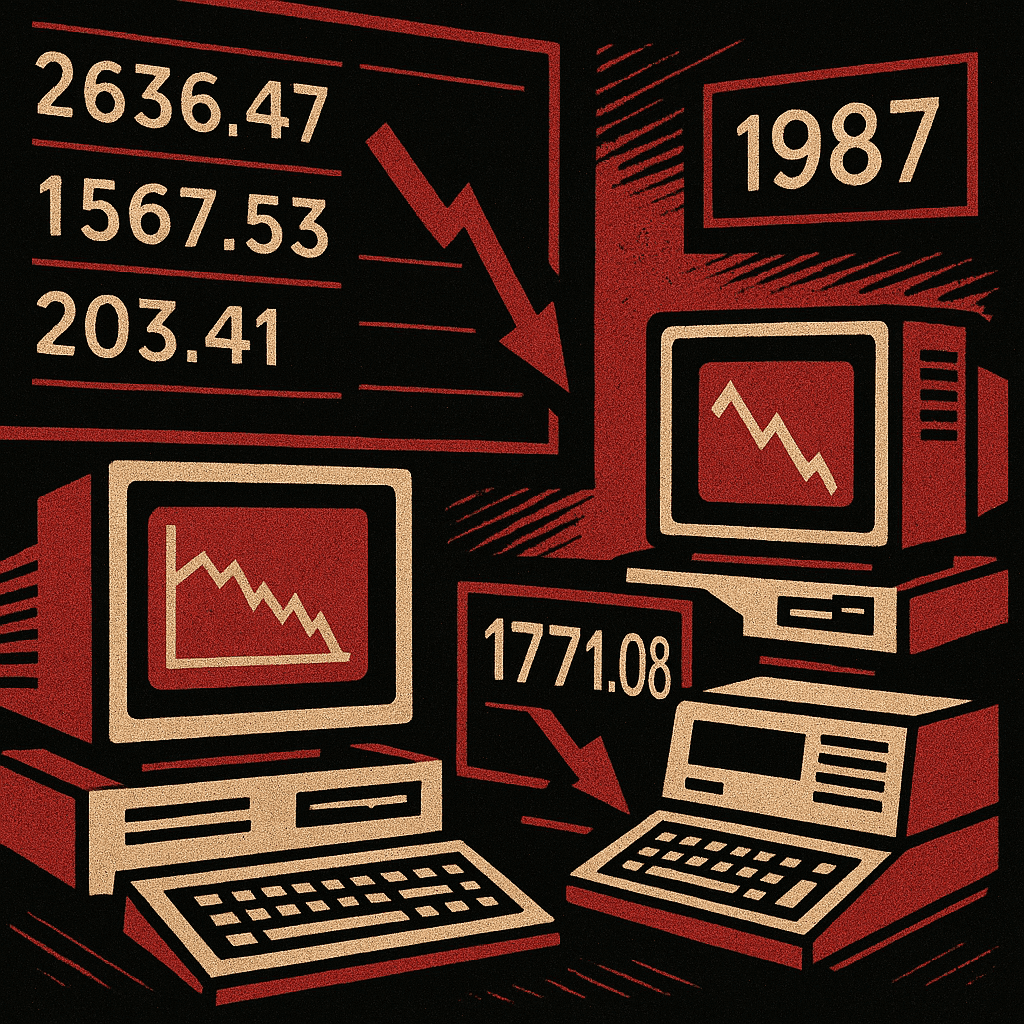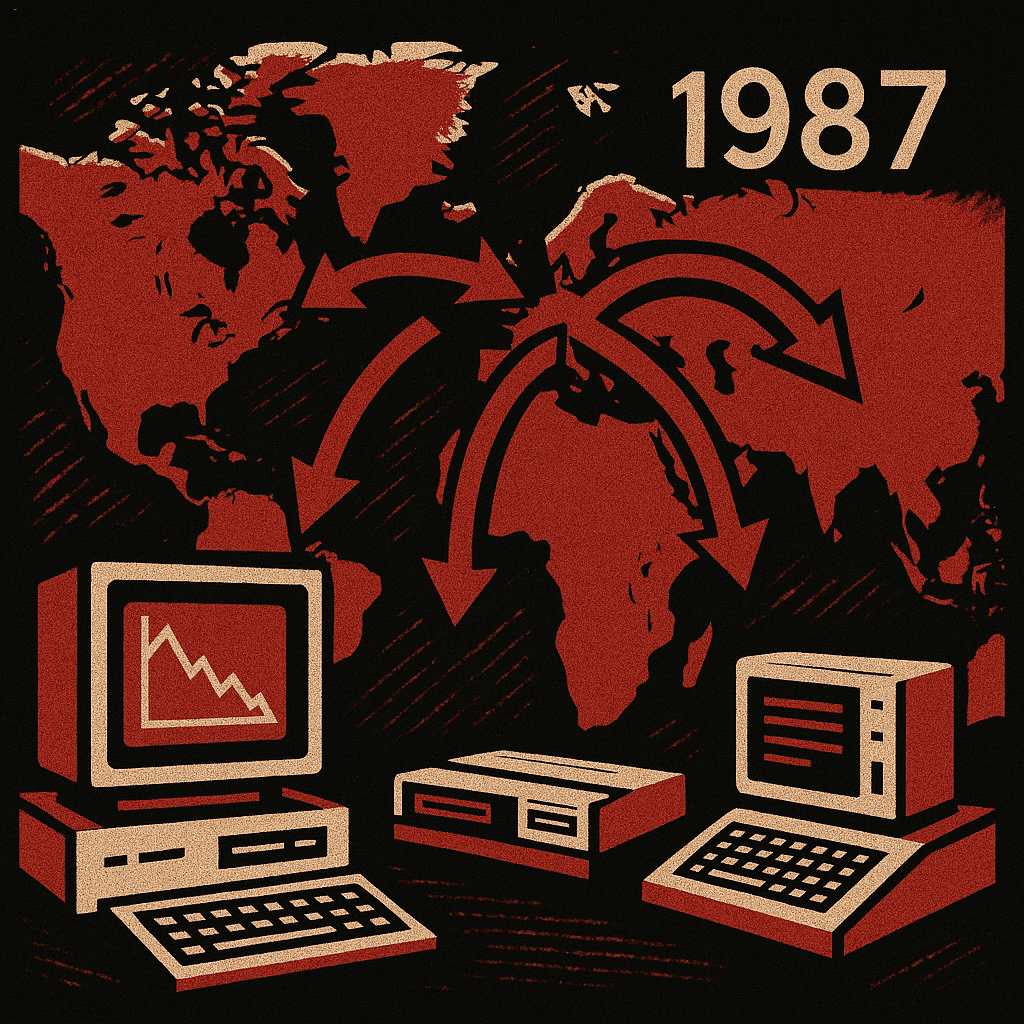On October 19, 1987, the Dow Jones Industrial Average plummeted 508 points, losing 22.6 percent of its value in the largest single-day percentage decline in stock market history. This catastrophic drop, immediately dubbed "Black Monday," wiped out over $500 billion in market value and sent shockwaves through financial markets worldwide. The crash began in Hong Kong, spread through London, and reached devastating proportions when U.S. markets opened, creating a global financial crisis that tested the stability of the international economic system.
The events of Black Monday fundamentally changed how financial markets operated and led to revolutionary reforms in trading systems, regulation, and risk management.

The Perfect Storm of Market Factors
Black Monday resulted from a convergence of economic pressures that had been building throughout 1987, including rising interest rates, growing trade deficits, and increasing tensions between the United States and its trading partners. The market had experienced unprecedented growth during the mid-1980s, with the Dow Jones climbing from around 1,200 in 1982 to over 2,700 by August 1987, creating conditions ripe for a major correction. Program trading, a relatively new computerized trading strategy, amplified selling pressure as automated systems triggered massive sell orders when certain market conditions were met.
The crash was exacerbated by the lack of coordination between different market mechanisms, including stock markets, futures markets, and options markets, which operated under different rules and had inadequate communication systems. As prices began falling, margin calls forced investors to sell additional positions, creating a cascading effect that accelerated the decline. The speed and severity of the crash caught regulators, traders, and investors completely unprepared for such a dramatic market event.

Global Contagion and Systemic Risk
The interconnected nature of global financial markets meant that Black Monday's impact spread rapidly across continents, affecting markets in Europe, Asia, and emerging economies. Major financial centers experienced severe declines, with London's FTSE 100 falling 10.8 percent and Tokyo's Nikkei dropping 14.9 percent in the days following the U.S. crash. The crisis demonstrated how quickly financial contagion could spread in an increasingly integrated global economy, raising concerns about systemic risk and the stability of international financial systems.
Central banks worldwide coordinated emergency responses, with the Federal Reserve providing liquidity to prevent banking system collapse and other central banks taking similar measures to stabilize their financial markets. The crisis tested the resilience of financial institutions and revealed vulnerabilities in market structure that had not been apparent during previous, smaller market downturns. The rapid recovery that followed demonstrated both the severity of the panic and the underlying strength of the global economy.
Revolutionary Changes in Market Structure

Black Monday prompted the most comprehensive reforms of U.S. financial markets since the Great Depression, fundamentally changing how trading systems operated and how risks were managed. The Brady Commission investigation led to implementation of circuit breakers that temporarily halt trading when markets decline by specified amounts, preventing the kind of free-fall panic selling that characterized Black Monday. New coordination mechanisms were established between stock, futures, and options markets to ensure more integrated responses to market stress.
The crash also accelerated the adoption of electronic trading systems and improved communication technologies that made markets more transparent and efficient while reducing the potential for technical failures that could exacerbate panic selling. These reforms, combined with improved regulatory oversight and risk management practices, helped prevent similar crashes from occurring despite numerous subsequent market stresses. Black Monday's legacy continues to influence market structure and regulation today, serving as a reminder of both the fragility and resilience of modern financial systems.